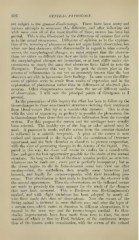Page 686 - My FlipBook
P. 686
696 GENERAL PATHOLOGY.
are siibjeet to the greatest disadvantage. There have been many and
various attempts to overcome this difficuhy, and after following out
with some care all of the more feasible of these, success has been but
partial. This is also illustrated by the differences of opinion that exist
as to the actual occurrences. Difference of opinion as to the explana-
tion of the meaning of phenomena does not argue faulty observation, but
when our best observers differ diametrically in regard to what actually
occurs, the morphological changes, we must suppose that the observa-
tions are either so difficult that they are liable to be inaccurate, or that
the morphological changes are inconstant, or at least differ under cir-
cumstances so nearly the same that observers have failed to note the
divergence. HoMever this may be, the part the tissues play in the
process of inflammation is not yet so accurately known that the best
observers are able to harmonize their findings. In some cases the differ-
ences of opinion seem to result from modes of expression and in the
explanation of phenomena rather than in differences of observed phe-
nomena. Other disagreements occur from the use of different modes
of observation. I will note the principal points of divergence as I
proceed.
In the prosecution of this inquiry the effort has been to follow up the
tissue-changes in those non-vascular structures deriving their nutriment
from blood-vessels that lay at a consideraljle distance. This is done
with the view of separating as perfectly as possible the phenomena due
to tissue-change from those that are due to infiltration from the vascular
system. For this purpose the cornea and the cartilages have usually
been selected. The healthy eye of the frog or other animal may be
used. A puncture is made, and the serum from the anterior chamber
is collected in a suitable receptacle. A piece of the cornea is now
excised and immersed in the liquid with the membrane of Descemet
U])])ermost, and the little chamber so closed as to prevent evaporation,
with the view of preventing changes in the density of the liquid. Pre-
pared in this way, the tissue will retain its vitality for a considerable
time, and give the best opportunity possible for the study of the normal
structure. So long as the life of the tissue remains perfect, no structure
whatever can be made out ; every part is perfectly transparent ; but as
the tissue begins to die its form-elements come into view one after
another—first, the epithelium, then usually some leucocytes just
beneath, and finally the cornea-corpuscles with their branching pro-
cesses. This observation is first made to familiarize the observer with
the normal appearances. Then the observations on the inflamed cornea
are made in precisely the same manner for the study of the changes
that may have occurred. This is Professor von Recklinghausen's
method, and with slight variations has been adopted by nearly all
who have made this class of observations. Now the cornea of the
living animal is irritated in some definite way, and after the lapse of
a certain time, which varies in duration in different observations, it is
treated in the same way and the tissue-changes studied. In these
studies improvements have been made from time to time, the most
notable of which is that by Pi-of Strieker, of the continuous irriga-
tion of the tissues under examination, with the serum of the animal


